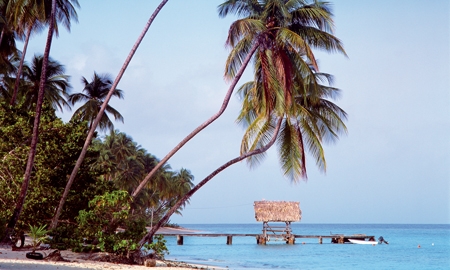Whether coming for the idyllic beaches and natural forests, the colorful Carnival festivals, or the overwhelming number of other religious and cultural holidays, visitors to the Caribbean archipelago nation of Trinidad and Tobago will always have some cause for celebration.
“We celebrate each other’s festivals,” says Patricia Butcher, Executive Director at the Trinidad and Tobago
Hospitality and Tourism Institute (TTHTI), the country’s leading institution for training and education across all areas of the hospitality and tourism industry. “For example, we have Divali, Eid and a lot of Christian religious festivals, and everyone gets an opportunity to celebrate.”
The nation, which passed under the colonial rule of the Spanish, British, French and Dutch until finally gaining its independence, has combined its past influences and pre-colonial indigenous roots to form an authentic melting pot culture. Approximately 80% of the population is made up of Indo-Trinidadian and Afro-Trinidadian, while the remaining citizens are an eclectic mix of European, Chinese and Syrian-Lebanese, among others.
There is also a harmonious coexistence among T&T’s religious communities, which are 65% Christian, 25% Hindu and 6% Muslim.
“I would say that Trinidad and Tobago is a multiethnic, multiracial, and very diverse society, where we all live in harmony,” explains Mrs. Butcher. “We really appreciate our racial and ethnic diversity and have something special and different to give to the world.”
One of the most famous international events is the islands’ Carnival celebration, where the entire population takes to the streets in colorful costumes for the two-day party.
“Our Carnival is a major event that especially attracts music lovers,” says Mrs. Butcher, whose institute puts on an annual Taste of Carnival event that showcases local cuisine.
The celebration is so crucial to the country that everyone watches as local musicians compete in a televised competition called Calypso Monarch, the name honoring the traditional Afro-Caribbean calypso music originating on the islands. Other competitions include stick fighting and the limbo, a dance contest whose origins date back to the 1950s in Trinidad and Tobago.
Besides Carnival, the nation comes together at many other times in the year to celebrate the various religious holidays.
Divali, known as the festival of lights, is a Hindu holiday where families light clay lamps and eat vegetarian meals together. The Catholic holidays of Corpus Christi and Easter are also observed, as well as Arrival Day on May 30, which marks the arrival of the first Indian laborers in the 19th century, commemorating their influence.
Probably the messiest of all celebrations is Phagwa, a Hindu festival, where participants are sprayed with colorful dyes while singing and dancing in the streets. This diverse mix of festivals showcases T&T’s rich culture while giving tourists an almost constant party.
When not celebrating with the locals, visitors can enjoy the cosmopolitan cities of Trinidad, where more than 90% of the population lives and include the capital city Port of Spain. Tobago offers scuba diving in the famous Buccoo coral reef.
Mrs. Butcher points out that many people only know about T&T’s beaches, but it has so much more to offer: “We are special and different, so we should not only promote sun and sand. There is a place for leisure tourists who like that aspect, but there are also tourists who would like to enjoy the culture, the cuisine, our events and ecotourism.”

0 COMMENTS